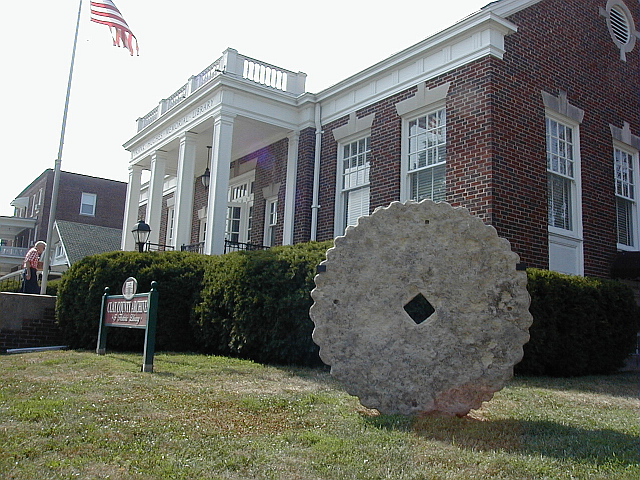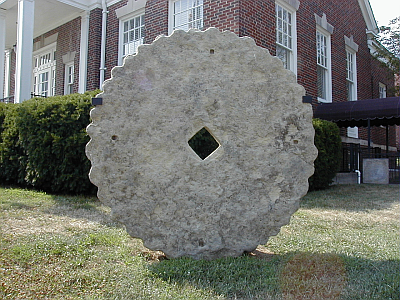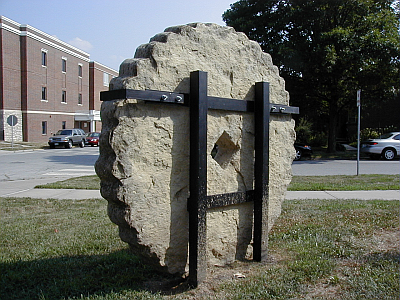 Trivia: This large round gear-toothed stone on the lawn of the Clay County Archives building in Liberty, Missouri is:
Trivia: This large round gear-toothed stone on the lawn of the Clay County Archives building in Liberty, Missouri is:
- an old mill stone used to make flour
- an old mill stone used to tan leather
- an instrument of torture for people who don’t rewind their microfilms
If you selected (2), you’re correct! Here are some interesting facts about the stone:
- It was carved from a single piece of limestone.
- It measures 8” thick and 65” in diameter and is estimated to weigh 1,000 pounds.
- It has a square 7” hole in the center to accommodate an axle.
- Its official name is an “edge runner stone”.
- It was recently found five miles northwest of Liberty, where land is currently being developed for new housing.
How the Tanning Process Worked
In the early days of our country, the dried, crushed bark from oak trees was used in the leather tanning process. A tanyard usually employed its own mill to grind tan bark. Tannin, an acidic substance, was obtained from the bark of oak trees. A spud, or peeling iron, was used to peel bark from the trees. This was usually done in the spring when peeling was easy and the bark contained the maximum amount of tannin. The bark was cut into long strips and allowed to air dry on racks. The dried bark was then coarsely ground in a tan bark mill.
The mill consisted of a deeply corrugated edge runner stone (like ours) that rolled on a wooden bed. The mill was usually powered by a horse or an ox. The bark was then thrown into a shallow leaching pit, where cold water was poured on it to yield a thick, sickly-sweet tannin liquor. Scraped hides were then laid into the pit to absorb the tannin. This process transformed certain proteins in the animal tissue into compounds that resisted decay.
Oak bark tanning is rarely practiced today, the industry having converted to a much quicker chrome tanning process. However, oak-tanned leather is still considered the highest quality.
The Tanyard, an Early Clay County Industry
Prior to 1830, John P.C. Dunn bought 60 acres of land from William Davis five miles northwest of Liberty. He operated a tanyard in partnership with John and Reuben Long. From 1841 to 1848, Joseph Henry Jenkins, in partnership with Charles Mann, operated Dunn and Long’s old tanyard for $50 a year rent on the property and the mill.
The following ad was placed in the Western Star, a Liberty newspaper, on April 9, 1841:
TANNING on the SHARES
The undersigned having commenced the tanning business At Dun’s old tanyard, five miles North West of Liberty, Respectfully inform the people of Clay county, that they are now prepared to receive hides to tan on the shares. Particular attention will be paid to all hides entrusted to their care.
JENKINS & MANN
March 1st, 1841
From 1848 to 1852, the old Dunn property was rented at various times to O.W. Rudd, William Thomason and Mrs. Simmons, none of whom operated the tanyard. By 1852 the tanyard is described as “having gone to decay”.
This close up view of the stone shows the square hole for the axle. Also notice the four notches near the outside edge of the stone:

This view is from the back to show the iron bracing buried deep in a pad of concrete:

